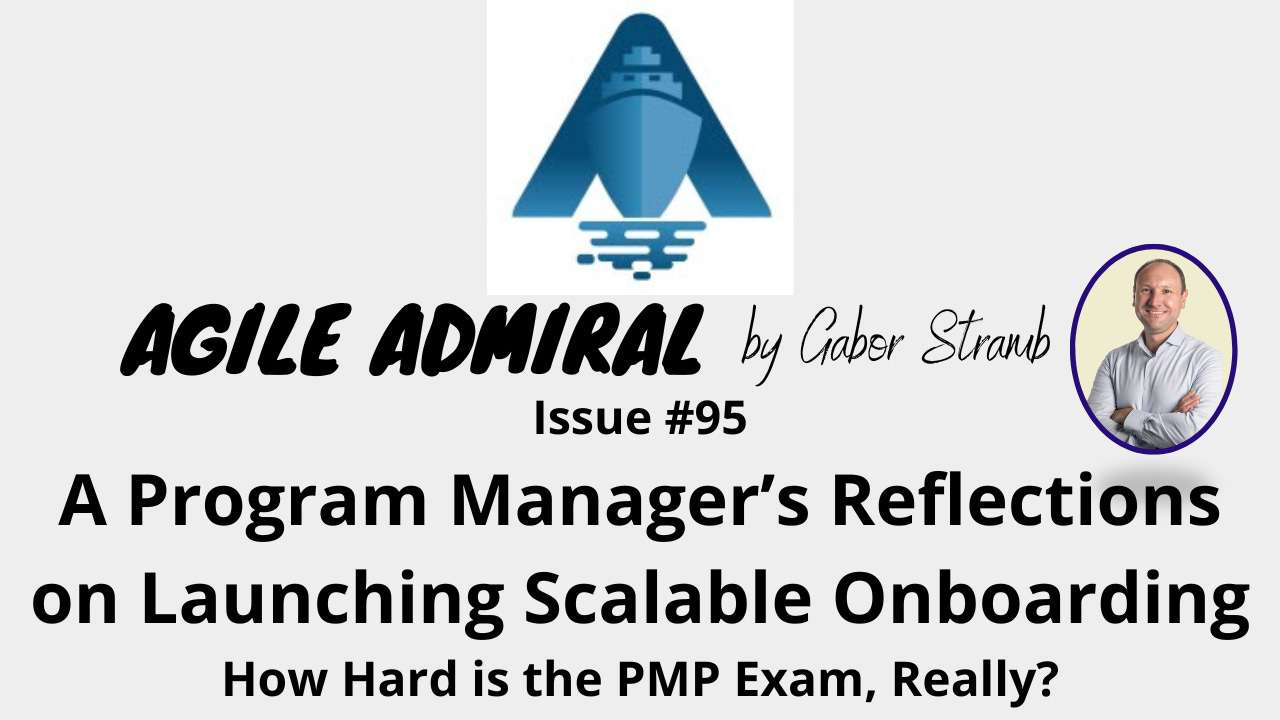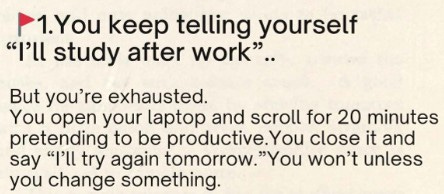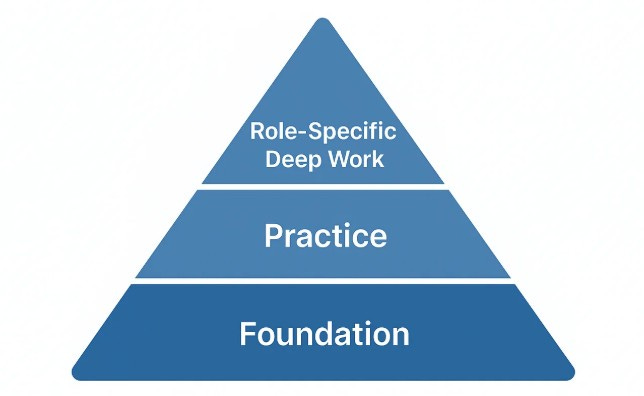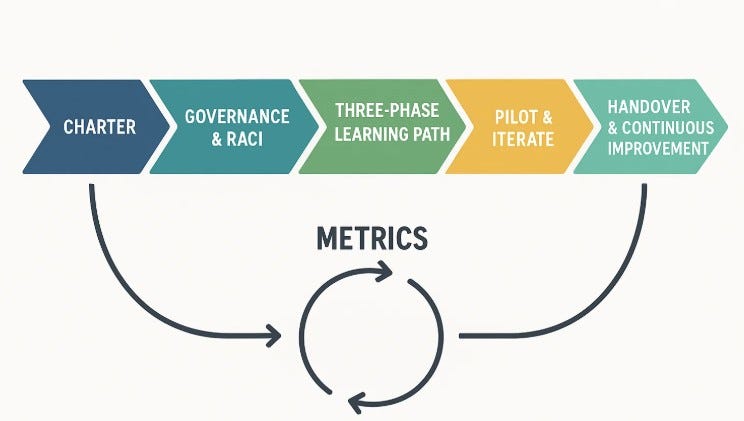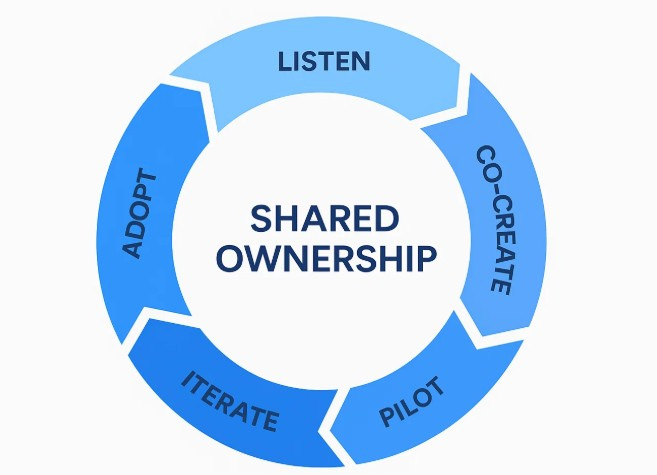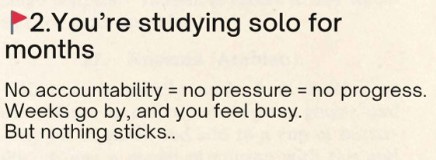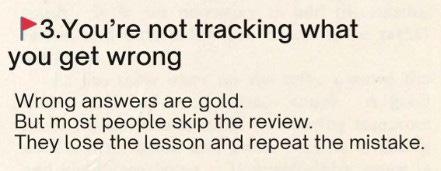A Program Manager’s Reflections on Launching Scalable Onboarding
How Hard is the PMP Exam, Really?
Read time: 3 minutes
Welcome to the Agile Admiral weekly newsletter. Your Essential Resource for Project Management Excellence.
Each week, I tackle reader questions about PMP preparation, how to implement PMP into real-life projects, and a Senior Project Manager career.
For more:
What's Inside This Edition:
A Program Manager’s Reflections on Launching Scalable Onboarding
How Hard is the PMP Exam, Really?
The Empty Boat Mindset
Design With, Not For:
A Program Manager’s Reflections on Launching Scalable Onboarding
If you’ve ever been chartered to lead a “reimagine onboarding” program, you know it rarely starts with a clean plan. The brief sounded simple—scale and standardize across regions—but the reality was a patchwork of expectations, siloed materials, and a push to package a framework as a full program by a fixed date. We launched a cohort‑based Academy with clear governance, a reusable framework, and measurable outcomes. Co‑creation wasn’t an add‑on; it was how we worked from the first meeting.
The goal was to turn inconsistent onboarding into a consistent capability‑building program. Instead of pushing a list of sessions and courses, we defined an Academy: a time‑bound, cohort experience that moved new associates from orientation to role readiness. The design followed three phases over eight to ten weeks. All content lived in the learning management system (LMS) so we had one source of truth, version control, and basic analytics.
Foundation built company, product, systems, and customer context.
Practice brought the work to life through simulations, shadowing, and role‑plays.
Role‑Specific Deep Work asked associates to handle realistic cases with a mentor beside them and manager checkpoints to make progress visible.
To turn strategy into execution, I wrote a program charter before anything else. It set scope, outcomes, and how we would measure success. We named the targets—time‑to‑independence, new‑hire satisfaction, early attrition—and agreed on what “role‑ready” meant so capabilities were explicit, not guessed.
I then set governance that worked in practice: a monthly Steering Committee for direction and trade‑offs, a bi‑weekly working group to clear blockers and assign work, and a simple RACI so everyone knew who creates, who reviews, who approves, and who maintains the framework. Project managers mirrored this at the project level when local content was redesigned or created.
We kept a single RAID log and reviewed it in every working session. When decision‑making was slow or unclear, we fixed the operating model—clarifying owners or cadence—rather than blaming individuals. That habit protected momentum and the team.
I invited cross‑functional leaders — HR, Tech, Service and Implementation leaders and Learning & Development — to co‑create a framework that was standard and reusable, while allowing local teams to adapt examples and policies without breaking the design. Cohorts of 12–15 people gave us the right mix of facilitation and peer learning. We also built the supports that make learning stick: a manager toolkit with first‑week scripts and expectations, and a mentor model where one experienced team member supported up to five associates with short weekly debriefs. I plan in patterns, so I structured the work the same way. As the program manager, my WBS covered the framework; because I also project‑managed several Academy rollouts, I kept both—a WBS for the reusable framework and a WBS for the localized builds. That approach kept planning clean and change control simple.
We ran the pilots with intent. Each pilot was a time‑boxed project inside the program, not a soft launch. Delivery Trainers completed train‑the‑trainer sessions with facilitation guides and timing plans so cohorts had a consistent experience.
We used short knowledge checks, observed role‑plays, and manager sign‑offs at milestones. Participants sent quick daily pulses; Delivery Trainers reviewed core indicators such as course completion, Learning NPS (LNPS), manager feedback, and mentor’s notes. At the end of each phase, we reviewed what to keep, change, or drop. Because entry and exit criteria were clear, the pilots produced comparable data, and we resisted the urge to change too many things at once.
We measured what mattered and made metrics part of the weekly rhythm. Leading indicators—attendance, completion, knowledge checks, observed behaviors, and mentor confidence notes—showed whether the engine was running. Lagging indicators—time‑to‑independence, complexity of work handled, error/quality rates, new‑hire satisfaction, and 90‑day attrition—showed whether the engine was taking us somewhere useful. In partnership with learning analytics, we built a dashboard for each region’s cohort so leaders could check progress anytime. When a metric dipped, we logged an Issue, assigned a Corrective Action, set an owner and a date, and tracked it to closure. That steady, visible loop built trust.
Launch created lift; sustainment created value. The framework evolved into a practical playbook and operating guide: the framework explained what the program was and why it was structured that way; the playbook and operating guide showed best practices, templates and how to run an Academy day‑to‑day so anyone could deliver it the same way next time across regions, localizing only what was needed. We ran a formal handover with acceptance criteria so the program was truly “owned.” Content updates followed the product/service release calendar. We versioned modules and archived older ones so people weren’t guessing which deck to use.
We treated facilitation as a leadership skill, recognized great Delivery Trainers and effective mentors, and held quarterly reviews that fed a small backlog. Material updates went through light change control under small, well‑scoped projects. That is how the Academy stayed current after the original team moved on.
What this means for any PM. The pattern travels well beyond onboarding—into tech, marketing, or operations. If you’re starting (or restarting) a program:
Name owners and approvals up front. Be clear on who decides, who contributes, and how decisions are recorded. Put this in the charter with scope, outcomes, and measures.
Set a working rhythm early. Use Steering for direction and trade‑offs, a hands‑on working group for action, a visible RACI, and a single RAID log people actually use.
Standardize the frame; allow smart local fit. Keep the design stable and let teams tailor examples and policies without changing the core.
Pilot with clear entry and exit criteria. Compare like‑for‑like results and change only what the data supports.
Plan the handover on day one. Sustaining value is part of delivery, not an afterthought.
That’s the shift: design with people, not for them. When ownership, rhythm, and measurement are simple and visible, you get adoption faster, scale more safely, and deliver results that last.
About the author:
Kelly Nascimento is a London-based program manager who loves turning chaos into clarity. With 10 years’ experience in change and program management and a strong focus on L&D, she blends empathy and structure to help teams navigate big challenges and deliver exceptional results.
How Hard is the PMP Exam, Really?
Still stuck in your PMP prep? It's probably not your effort; it's your routine. Here are 3 brutal red flags:
❌ Telling yourself “I’ll study after work” and never actually doing it.
❌ Studying solo for months, zero accountability = zero progress.
❌ Measuring hours, not outcomes, busy ≠ better.
If this feels too real...You don’t need to study harder.
You need to study smarter.
But first: A bunch of readers/PMs/PMP students asked me some tough questions about the project management career path recently.
Check this controversial take here.
Warning: It contains more than a few shocks!
The Empty Boat Mindset
Here’s a story I come back to when I’m feeling stressed or frustrated…
A monk goes out on a boat in a small lake to meditate. After a few hours of uninterrupted silence, he suddenly feels the jarring impact of another boat bumping into his.
While he does not open his eyes, he feels the irritation and anger building within him.
“Why would someone do that? Can’t they see me here? How dare they disturb my meditation?”
He opens his eyes, ready to shout at the person in the other boat, only to realize that it is empty. It had come untied from the dock and was floating in the middle of the lake.
In that moment, his anger and frustration disappear. After all, you cannot be angry at an empty boat.
The story offers a powerful lesson, which I call the Empty Boat Mindset:
In life, you’re going to experience countless collisions. With people. With environments. With chance circumstances outside your control. Each of these collisions will threaten to derail you. To stoke the fire of anger, stress, and frustration. To knock you off your path.
The truth is that the negative emotions that grow inside you are rarely from the collision itself, but from your perception of the negative intent behind the collision.
If you convince yourself that every collision is a deliberate action by a bad actor, negative emotions will control your entire life. In others words, your interpretation of the collision creates your own poison.
The Empty Boat Mindset is the reminder that most of these collisions you experience in life are with an empty boat. There is no negative intent. There is no desire to harm. They are simply the random collisions of objects floating along on the lake of life.
Interestingly, when you embrace the Empty Boat Mindset, you reassume control over your own boat. You’re no longer prone to the spiraling emotional effects of chance collisions. You are a seasoned explorer, ready to adapt to whatever the seas throw your way.
So, the next time you feel a collision and find your negative emotions growing, pause and ask yourself a simple question:
Am I just getting angry at an empty boat?
I stole this article from Sahil Bloom article
🎤 Listen to this: 20 minutes of Gabor’s no-fluff advice on hybrid questions, mindset, and explanations.
Let's win together,
Follow me on LinkedIn | YouTube | Instagram
Truth bombs: You can pass PMP in 8 weeks, I’m happy to show you “how”. When you’re ready, follow the links below:
👉🏼Do it together - join the PMP Operation System
👉🏼Do it 1-on-1 - join 8-week coaching program
https://gaborstramb.com/special-offer


